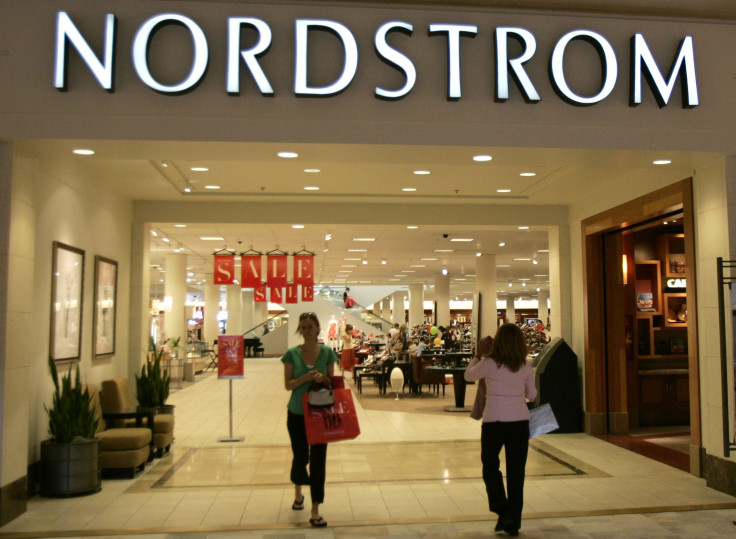US Luxury Retailers Neiman Marcus, Nordstrom Quietly Outperform Stores For Middle Class

As American mid-tier department stores report crawling sales, the luxury goods sector continues to quietly pull ahead. That’s largely because the wealthiest Americans are cashing in on record stock market highs and rising property values. And they’re splurging on fine jewelry, apparel, handbags and other items while the vast majority of U.S. consumers haven’t seen a wage boost in decades.
“The U.S. luxury market is like the tortoise in the tortoise and the hare fable, meaning that slow gradual pace that continues to grow and grow and grow … which is why you don’t hear about the American [luxury] market much,” said Marshal Cohen, chief industry analyst for market researcher NPD Group.
Dallas-based luxury retailer Neiman Marcus reported Tuesday that its third-quarter comparable sales rose 5.5 percent from a year ago to $1.19 billion. Canadian retailer Hudson's Bay, operator of Lord & Taylor and Saks Fifth Avenue, reported Tuesday that its third-quarter sales nearly doubled due to the recent acquisition of Saks. Same-store sales at Saks rose 1 percent. And last month, Nordstrom reported sales rose 8.9 percent in the third quarter to $3 billion, while profit rose to $142 million from $137 million in the year-earlier period. Comparable store sales at Nordstrom increased 3.9 percent while sales at Nordstrom Rack, the brand’s discount outlet, increased 1.7 percent.
Compare that to mid-tier store Macy’s, which reported last month that its third-quarter sales fell 1.3 percent despite its ongoing attempts to appeal to both upper- and middle-income shoppers, or J.C. Penney, which reported flat third-quarter sales. Kohl’s reported a 1.6 percent fall in third-quarter sales.
Most Americans’ wages today have about the same purchasing power as they did in 1979 after adjusting for inflation, according to the Pew Research Center. Since 2000, weekly wages have fallen 3.7 percent, adjusted for inflation, among the bottom 10 percent of income earners and 3 percent among workers in the bottom quarter of the earnings distribution, Pew says. Workers in the top 10 percent have seen their wages rise 9.7 percent over the same time period.
Weekly earnings refer only to weekly income that individual workers obtain from wages and salaries and not a family or spouse’s income or bonuses, a family’s self-employment income or any sources of income outside of an employer, like interest, dividends or capital gains, said Gary Burtless, senior fellow at the Brookings Institution who researches income distribution.
“There has been a tendency for wage gains to be higher near the top of the weekly earnings distribution than in the middle,” Burtless said.
And for the ultra-rich in the top 5 percent, the stock market’s performance is the most likely indicator of spending on pricey watches, wines, mink coats and other luxury items. The Dow Jones Industrial Average hit an all-time high last week, for the 32nd time this year.
“As goes the market so goes luxury,” Cohen said. “When the market goes high, it gives investors the confidence to respond by buying expensive products.”
On a call with investors Tuesday, a Neiman Marcus executive said "the stock market as you know is important to us" and that its shoppers are "feeling good about things."
Meanwhile, sales in the luxury sectors in Europe and Asia are mixed. Pro-democracy protests in Hong Kong, home to many ultra-rich shoppers, have disrupted sales for many international luxury retailers. Further, Chinese President Xi Jinping’s campaign to squash corruption has caused a slowdown in sales of luxury items, many formerly bought by party officials as business gifts, Prada told its investors recently.
In Europe, the luxury sector has widely shrugged off the larger economic downturn. From 2010 to 2013, Europe’s luxury goods sales, including cars, wine and clothing, grew 28 percent to $678 billion, according to a recent report by Frontier Economics.
Cohen calls the European and Asian luxury markets “more like the hare [in Aesop’s fable] that goes up and down” and are very volatile.
“After the dust settles in 2014, [American luxury retailers] are going to have a better-than-expected year,” he said.
© Copyright IBTimes 2024. All rights reserved.






















